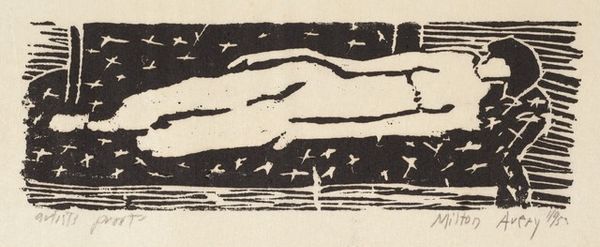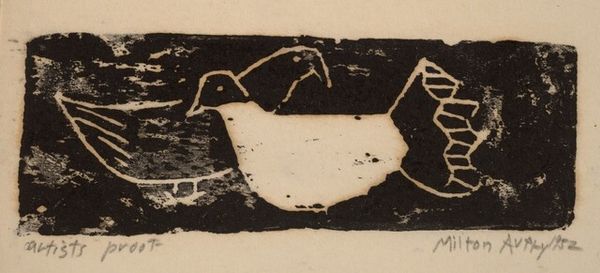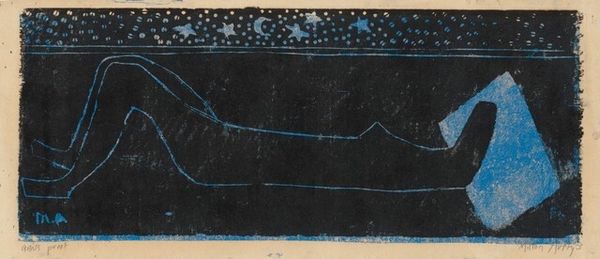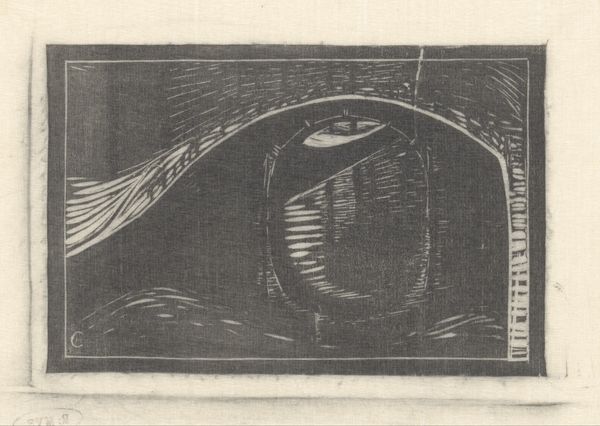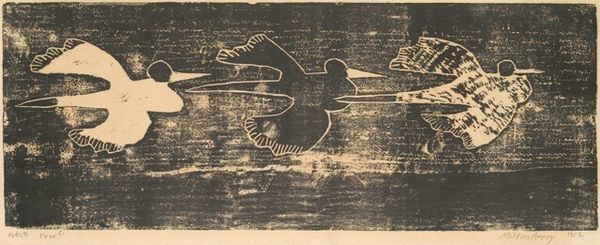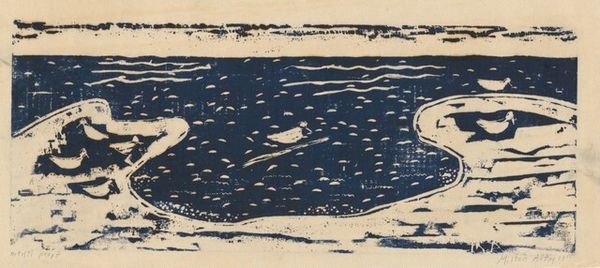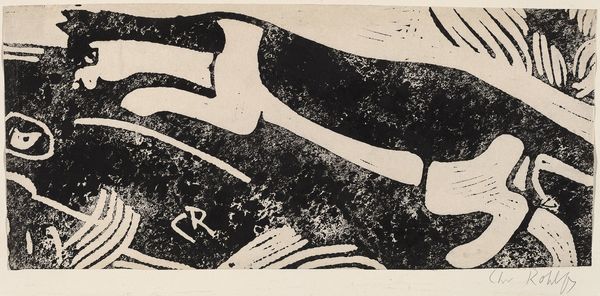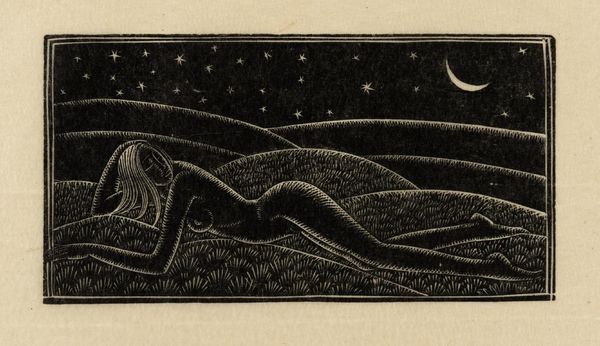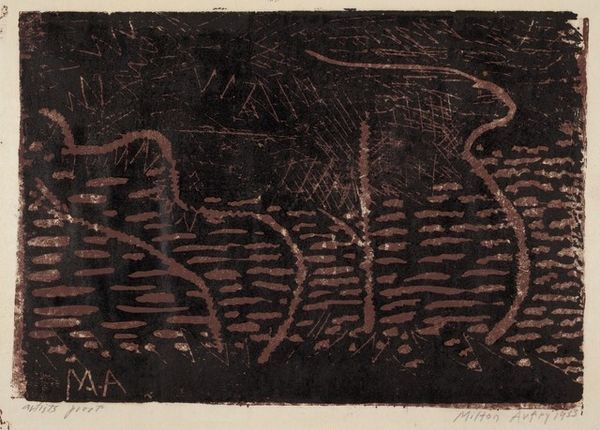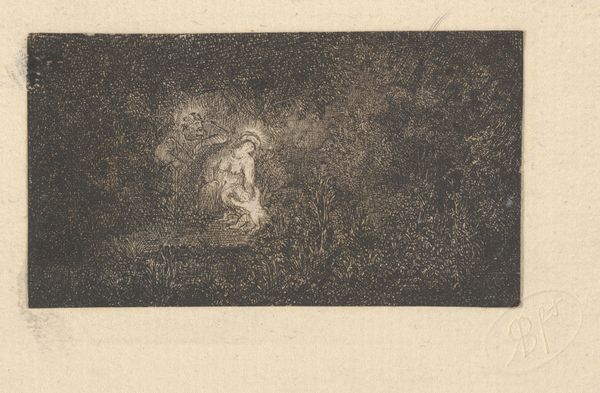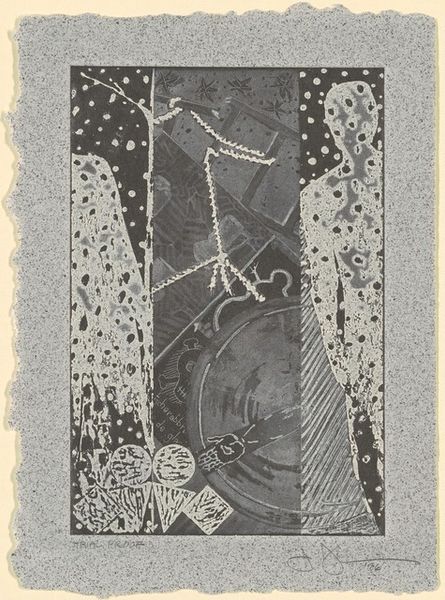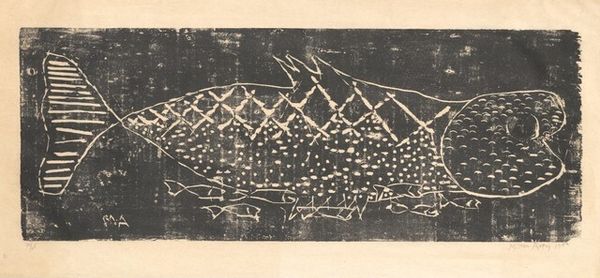
Dimensions: image: 24.5 x 60.9 cm (9 5/8 x 24 in.) sheet: 29.7 x 72.5 cm (11 11/16 x 28 9/16 in.)
Copyright: National Gallery of Art: CC0 1.0
Curator: What strikes me immediately is the simplicity of form; a stark black field punctuated by crisp white lines suggesting a figure reclining beneath a star-studded sky. It's minimal, yet there's a real sense of tranquility. Editor: I agree. We’re looking at Milton Avery’s “Night Nude” from 1953. This woodcut print showcases his mastery of line and abstraction, capturing a human figure in repose beneath a celestial expanse. Curator: That constellation imagery is compelling, isn't it? Throughout history, the night sky has represented boundless possibilities and the cyclical nature of time, as well as guidance through darkness. In this piece, are we invited to reflect on themes of renewal and introspection? Editor: Certainly. The figure, though minimalist, commands the space with a kind of quiet confidence, almost geometric in its form. And the use of the woodcut as a medium is itself a powerful symbol. Curator: How so? Editor: Well, the physical process of carving into wood, removing material to create an image, feels quite elemental. There’s something inherently grounded about it that lends itself to these symbolic representations of earth, sky, and human form. The way the ink grabs onto the slightly textured paper further enriches its physicality. It also allows a cultural memory to live within it, linking its expression and its tradition to what the print evokes. Curator: The negative space, or rather the 'positive black' in this case, works to create a palpable atmosphere. A visual experience rooted not only in seeing but in feeling the artwork and how the balance of dark and light helps communicate a sense of introspection and emotional depth. Editor: Indeed. It's more than just a picture; it’s an experience crafted through the artful manipulation of form and medium, and in dialogue with inherited symbols of night and form, that stays with you. Curator: Absolutely. This piece really highlights the power of reductive forms in capturing not just the look, but also the essence of being. Editor: Yes. And perhaps by simplifying the visual elements, Avery prompts us to consider those essential questions that endure through time and across cultures.
Comments
No comments
Be the first to comment and join the conversation on the ultimate creative platform.
